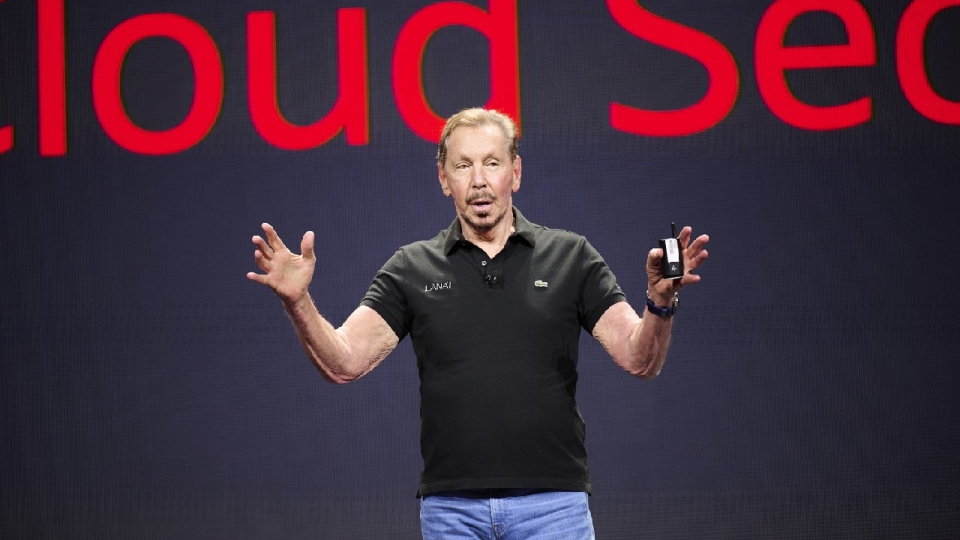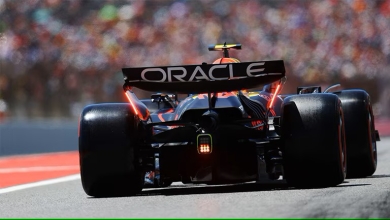
Oracle unveiled a large number of new AI products and services to aid cloud data management at this week’s Oracle CloudWorld conference in Las Vegas, but IT Europa heard Oracle chairman and CTO Larry Ellison (pictured) slam existing cloud security.
At the conference, Oracle, for instance, announced the general availability of an Oracle Cloud Infrastructure (OCI) Generative AI (GenAI) Agent with retrieval-augmented generation (RAG) capabilities. The agent helps customers turn their data into a competitive advantage by making it easier to apply AI to real-world business operations.
The first of a series of OCI GenAI Agents, the RAG Agent provides out-of-the-box RAG capabilities, enabling customers to get started while avoiding manual processes such as agent planning, retrieval, re-ranking, generation, and integration. It also provides a self-check to reduce hallucinations, enabling customers to adopt RAG technologies to streamline their business processes without spending cycles on research and development.
Oracle also introduced generative development (GenDev) for enterprises, a “groundbreaking” AI-centric application development infrastructure. It provides development technologies that enable developers to rapidly generate sophisticated applications, and makes it easy for applications to use AI-powered natural language interfaces and human-centric data.
GenDev combines technologies in Oracle Database 23ai, including JSON Relational Duality Views, AI Vector Search, and APEX, to facilitate development using generative AI.
Another service, among others, unveiled at CloudWorld was Oracle Cloud Success Navigator, an interactive digital platform to help customers maximise the value of their Oracle Cloud implementations. By providing centralised access to a comprehensive set of tools and best practices, Oracle Cloud Success Navigator helps customers optimise their cloud and AI transformations and “drive sustained business growth”, we were told.
But, on the same bill, was Mr Ellison, with his doom-laden thoughts on cloud security, although with rays of sunshine in-between.
As the cloud becomes more open and expansive, cyber attacks are escalating, Ellison said. Every year, enterprises pay more in ransoms to hackers. The growing challenge of protecting data, applications, identities, and networks has become too much for mere humans, he said.
“The clouds are opening. They're no longer walled gardens. Customers will have choices,” he said.
Protecting users is currently mostly a matter of passwords, said Ellison, those 17-digit nuisances that are hard to remember and always need to be changed. “No more,” said Ellison.
“The idea that we use passwords is a ridiculous idea. It’s obsolete, and it’s very dangerous. People end up writing down their passwords and reusing them across their online profiles, making them valuable items on the dark web.”
He said biometrics eliminate the need to memorise cumbersome sequences of characters and digits. Users’ faces, fingerprints, and voices can now provide authentication instead. These technologies can deliver far superior security, he added, while saving users “time and grief”. Biometrics are now being widely integrated into Oracle products.
But network security posed what Ellison called an “astoundingly complicated problem”.
The fundamental problem is that configuring a network presents two competing goals: maximising speed, performance, and reliability on one hand, and protecting data on the other.
A solution being offered by Oracle in clouds involves separating the network configuration process from security altogether. Ellison explained Oracle Cloud Infrastructure Zero Trust Packet Routing, or OCI ZPR.
AI-powered robots do the lion’s share of the work. Network administrators need to focus only on configuring, and reconfiguring, their enterprises’ networks in a way that optimises performance. They then write natural language policies that limit network traffic based on the resources and data services that need to be accessed, such as an accounting application connecting to an accounting database.
ZPR generates the code by which robots inspect every packet through the network - “billions every second” - and makes sure they aren’t going where they don’t belong.
This approach to security works only because of Oracle’s differentiated RDMA network architecture and network processors, Ellison maintained.
“With biometrics and OCI ZPR, systems are much more difficult to infiltrate, and it’s pretty much impossible to move data out of the system across an unauthorised route,” Ellison promised CloudWorld attendees.
“All of these AI technologies give us a chance to win the cyber wars.”


